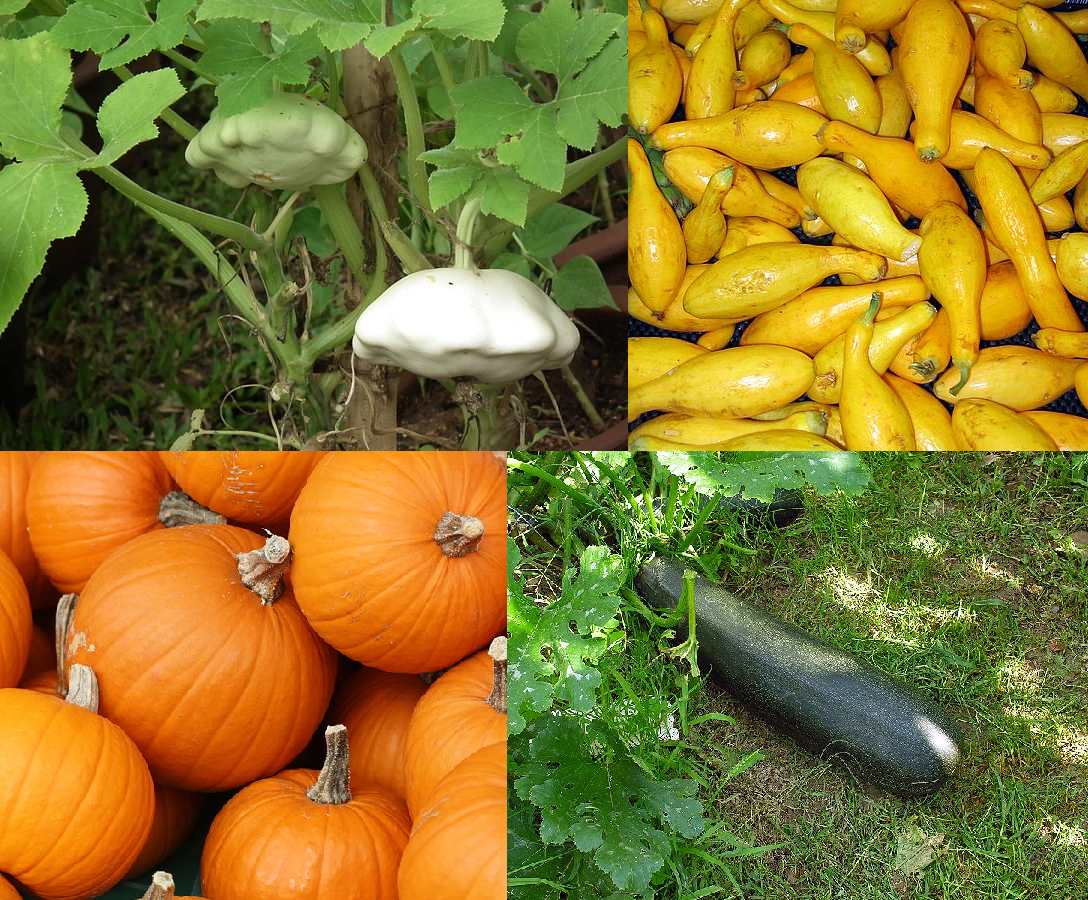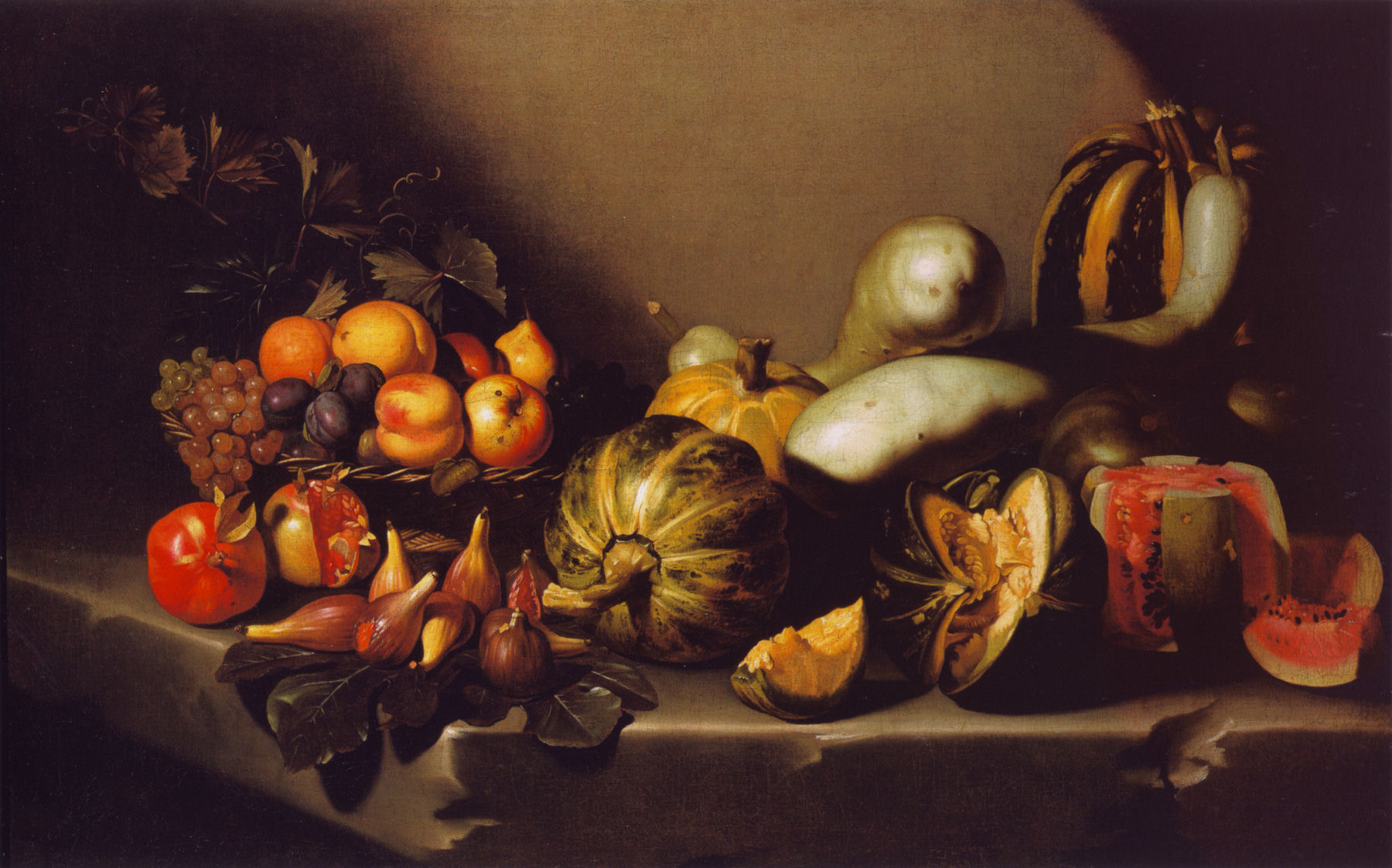 What was that big empty orange thing we carved up this year for Hallowe’en? One might be forgiven for calling it a “pumpkin,” were it not devoid of any pumpkin flavor. After all, it was grown in a pumpkin patch, sold as a pumpkin, carved, rotted and tossed like millions of other pumpkins. Close to a billion tons of pumpkins are grown and just discarded into landfills in the US every year. The amount of methane emitted from the annual pumpkin slaughter is equivalent to the yearly output of half a million cows.
What was that big empty orange thing we carved up this year for Hallowe’en? One might be forgiven for calling it a “pumpkin,” were it not devoid of any pumpkin flavor. After all, it was grown in a pumpkin patch, sold as a pumpkin, carved, rotted and tossed like millions of other pumpkins. Close to a billion tons of pumpkins are grown and just discarded into landfills in the US every year. The amount of methane emitted from the annual pumpkin slaughter is equivalent to the yearly output of half a million cows.
Most Jack-o-Lanterns are related to the Howden Biggie cultivar developed by John Howden in 1940s’ Massachusetts. Selected to grow big and fast and bright-orange, they taste pretty much of nothing. Pie pumpkins, grown mostly in Illinois and Indiana, taste better. Both of these are varietals of Curcurbita pepo, a species that includes other timid-tasting squashes like zucchini, pattypan, and yellow summer squash. Even spaghetti squash is in this species, but it’s had most of the antioxidant and fiber value bred right out of it.
Kabocha pumpkin
For flavor, I suggest you go with Curcurbita maxima instead of Curcurbita pepo. In several ways, Kabocha “squash” is more pumpkin than pumpkin. It has 5 times as much dietary fiber as your basic pumpkin. And a half-cup of kabocha yields all the vitamin A you need in a day on top of healthy doses of vitamin C, potassium and iron. Kabochas also taste like something! The original Colonial American “pumpkin” was probably Curcurbita maxima (pôhpukun to the Wampanoag ), with the local Curcurbita pepo varieties being otherwise known by the Narragansett word askútasquash (i.e., “squash”).
I’m going to call them “kabocha pumpkins” from now on.
I would rather sit on a pumpkin and have it all to myself, than be crowded on a velvet cushion.
Henry David Thoreau
The influence of New World edibles on 16th Century European culinary arts was instant and profound. Even as Columbus was on his fourth voyage, Jean Bourdichon was illustrating a squash in the prayer book Grandes Heures d’Anne de Bretagne. A mere decade later, banker-to-popes Agostino Chigi was commissioning kabochas to be painted on the festoons of Villa Farnesina in Rome. Later, kabocha pumpkins turn up (sic) in some of the earliest and best known foodie paintings by Caravaggio and Jan Roos. Kabocharoque?

It saddens me that when you Google “pumpkin art” none of this appears. Please do not Google “pumpkin art“.
You may have thought kabochas were Japanese pumpkins. After all, “kaBOcha!” sounds awesome with a stern Japanese samurai inflection. And even though about a fifth of the average vegetable tempura arriving at your table is likely to be kabocha, you now know its Amerindian origins. With its meaty texture, depth of flavor and intense yellow color, kabocha pumpkin has been an integral component of Japanese cuisine for hundreds of years.
But “kabocha” isn’t Japanese.
It’s no accident that the one other word you may have heard that sounds one hell of lot like “kabocha” is “Kampuchea”, the name of the country Cambodia in the Khmer language. In fact, when spoken by a Parisian, even the French name “Cambodge” sounds pretty close to “kabocha”.
The Portugese transcribed “ព្រះរាជាណាចក្រកម្ពុជា” as “Kamboja” which approximates the Middle Khmer “Kambuja.” That word is also found in Burmese and Thai chronicles where they refer to the nomadic Kambuja tribe that originated near modern-day Bagram Airforce Base in Afghanistan. In any case, maybe a thousand years after the name of the tribe arrived, the pumpkin arrived and the Portugese put those together as they handed these popular-in-Cambodia Amerindian-pumpkins to the Japanese with the Portuguese moniker “abóbora kabocha.”

The Boy doesn’t like vegetables. In fairness, he only thinks he doesn’t. To my advantage, he also thinks all vegetables are green. The only part of a kabocha pumpkin that’s green is the skin and it comes off easily with a vegetable peeler or a knife. There’s so much flesh inside of a kabocha pumpkin that you’re not going to lose much from peeling it. That being said, except for the 5 yr old, there’s no need at all to peel a kabocha pumpkin. The skin is perfectly edible and softens up nicely depending on how you cook it.
My mom used to serve us a kind of squash-mush that I think she learned from her own mom. I love my mom, but I did not love that squash-mush any more than the “turnip” mush at Thanksgiving that was actually rutabaga mush. I later learned that even she didn’t like it. Nor did my dad. Nobody liked it. But every Thanksgiving and Christmas we all had to eat in some form of gustatory Catholic penance. Not any more.
Dumplings
Roasting pumpkin is always a good bet. Like a butternut or acorn squash, there is a lot that happens on the down-facing split side. It’s not just the nice rich color of the exposed surfaces. Dry heat is hotter than wet heat which only gets to 100 C. The higher dry heat of an oven will caramelize sugars in the kabocha as they are released from cells, just like caramelizing onions or shallots. The dry higher heat also allows the sugars to engage in a complex dance with proteins in the Maillard reaction. The outcome is something that had our ancestors on the Serengeti wondering why it took so long to finally find good tasting food.

There is a way to carefully “push” the Maillard reaction. Dust the pumpkin with the tiniest amount of baking soda (not baking powder). Sodium bicarbonate raises the pH, ripping protons (H+) off of the amino acids in the proteins allowing for easier reaction with reducing sugars. Which is all part of that browning and deliciousness. Do not use too much, and don’t let it sit around too long before cooking. Baking soda will also cause the breakdown of cellulose and make everything mushy. I steamed a bunch this way in a pressure cooker for 2 minutes on high… released, removed and sautéed the slices in a pan with butter (above). The results are as obvious to the nose as to the eye.
Now remember, The Boy is suspicious of any vegetable he can see on his plate. It’s very hard to see inside of a dumpling. And while it’s next to impossible to find Asian dumpling wrappers in Washington Heights, all you need is to expand your understanding of what is a dumpling. Or what can be a dumpling. The only major difference between a Chinese dumpling wrapper and an empanada wrapper is thickness (ok, and lard).

I thinned the empanada sheets with my pasta roller, and punched them out into dumpling-sized disks. The filling was about equal parts ground pork, riced cauliflower and mashed kabocha with Chinese 5-spice and a dab of kecap manis in each dumpling. I nuked a small ball and taste-tested for salt before assembly.
The result was succulent. My empanada-sourced wrappers had the consistency of shuǐjiǎo or baozi dumplings (as opposed to the thinner jiaozi dumpling). A nice chew on the outside and the filling that held together while complimented by a side of seared kabocha that I dusted with ground Szechuan peppercorn and cayenne. I could have fried them afterwards too, given the lard.

Thai Noodles?
It’s hard to find a kabocha pumpkin small enough to service but a single meal. On day 2, as I was pondering what to do with the more-than-half a kabocha left, The Boy announced that he wanted “Thai noodles” for lunch. This surprised me somewhat because he’s not an adventurous eater. I knew that in the cupboard I had some mung-bean vermicelli. Udon noodles might substitute for Thai phad in a pinch. So I gave him a choice.
“No, not those noodles. Thai noodles!” I heard him say.
Perplexed, I apologized that I did not have proper Thai noodles. I had some soba, so I explained that I could probably make the cold sesame noodles he liked pre-pandemic, when we used to go to Han Dynasty. And then he explained, “No Da! Noodles shaped like ties! Tie-noodles.”
Farfallini.
Half riced kabocha, half ricotta, some nutmeg and salt, a little olive oil and pasta water. I give you Tie Noodles or Farfallocha:

Using up the rest
Caramelized kabocha dusted with cinnamon and some ancho powder, with a few diced beets, baby-kale… terrific veggie tacos.

With allspice and almond flour… a kick-ass pancake with serious nutritional value.

I think the most creative way I got The Boy to eat kabocha pumpkin for a fourth day in a row was blending it into the sauce for a stand-up-rigatoni baked mac-n-cheese. In effect, a kabochamel made with a little mace.

And an actual pumpkin pie for dessert, of course, where you can see the specks of freshly ground cloves.


